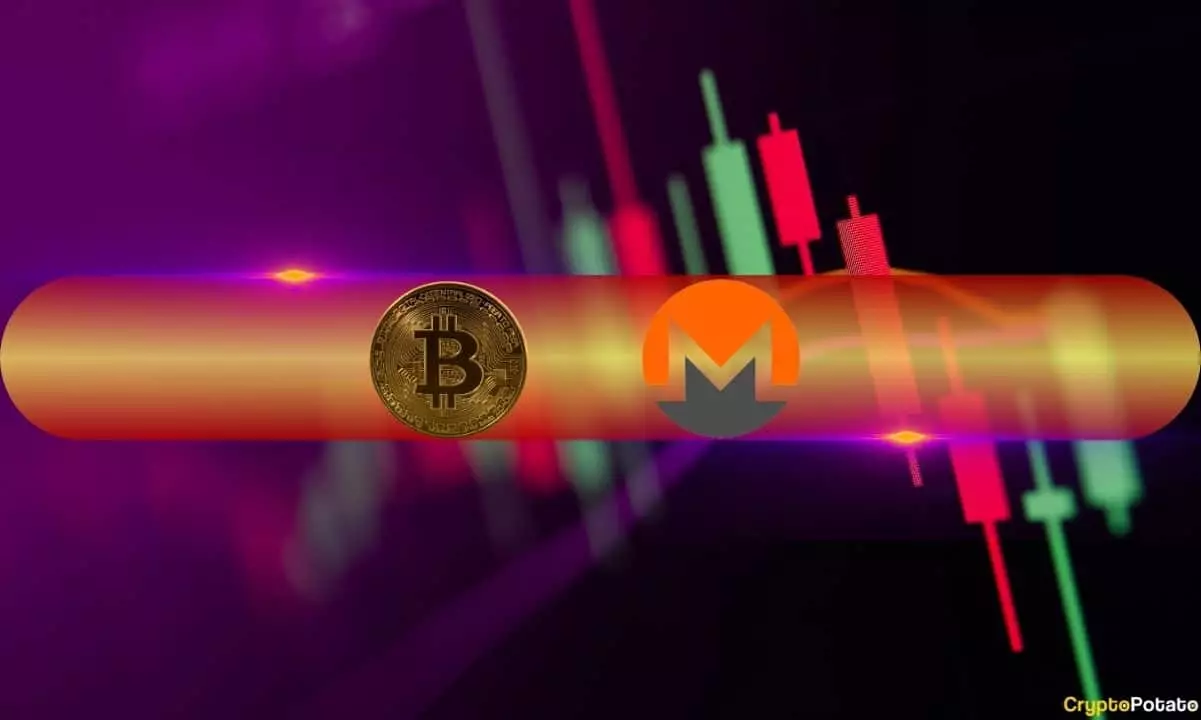After a notably lackluster weekend, when Bitcoin plummeted to a concerning $103,000, it seems to have found a flicker of hope, rebounding to approximately $106,000. While initial impressions might overshadow this swing as a mere temporary uptick, the reality is more complex. Bitcoin, the leading figure in the cryptocurrency realm, remains an enigma—a financial asset that oscillates dramatically, eliciting both enthusiasm and despair. It is a battleground where economic principles collide with speculative tendencies, yet the potential rewards remain alluring.
Market Performance of Altcoins
In the backdrop of Bitcoin’s volatility, altcoins have been underwhelming with only marginal gains. HYPE, however, stands out with a seemingly impressive 3% rise. Meanwhile, Monero’s recent 6% surge captures attention, drawing investment towards its anonymity features. This fluctuation emphasizes an essential narrative: cryptocurrencies are not merely competing against each other for market capitalization; they are engaging in a broader conversation concerning trust, security, and utility in an era where privacy is in the spotlight. This shift underscores the reality that many investors are searching for avenues beyond the traditional market, driven by fears over government oversight and the erosion of currency values.
Political Underpinnings and Market Reactions
Analyzing the recent price action reveals a significant underlying factor—politics. Following President Trump’s comments about potential tariffs on the EU, Bitcoin faced an immediate setback, reflecting just how sensitive this market is to external influences. The sharp correction almost feels like a pendulum swing between traditional economic structures and the new decentralized paradigm Bitcoin embodies. The fact that the cryptocurrency market is still swayed by political rhetoric highlights its still-maturing status; it begs the question of whether Bitcoin is a true hedge against traditional markets or simply another asset reacting to the whims of political leaders.
Geopolitics and Investor Sentiment
Fast-forward to China’s swift response to Trump’s comments, and once again, Bitcoin’s price dipped to a 12-day low. This reinforces a common apprehension among investors: geopolitical tensions are woven into the very fabric of cryptocurrency markets. As this sentiment unfolds, savvy investors must navigate a maze of information with an acute awareness of global occurrences impacting their portfolios. The increased price activity, even if it seems minor, signals a renewed interest and belief in Bitcoin’s long-term prospects.
Market Dominance and Future Prospects
Bitcoin’s market cap rising to $2.1 trillion, with a dominance of 61.5% over the altcoin market, paints a picture of resilience. Despite recent struggles, this dominance demonstrates Bitcoin’s widespread acceptance. It remains the go-to asset for many, influencing the perceptions of investors and regulators alike. As we play this waiting game, assessing future volatility, it’s clear this is not merely a blip in the market but part of a broader dialogue on the future of finance. The question remains—is Bitcoin merely a passing fad, or does it signify a seismic shift in how we perceive money?
The crypto ecosystem might be fraught with uncertainties, but as an investment vehicle, Bitcoin embodies both risks and incredible opportunities that cannot be overlooked. Ignoring it means sidelining oneself from what could potentially be a revolution in financial autonomy.

